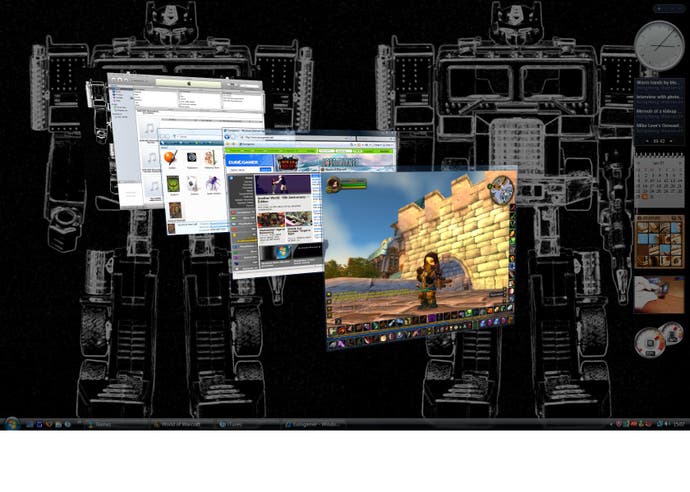Windows Vista
What it means for gamers.
Operating systems are absolutely ridiculous.
At least, the hype/rapture/rage that surrounds them tends to be. To most people, especially gamers like you, I and Robin Williams (no, really - he apparently plays Battlefield 2, plus I saw him at E3 once, trying to blag his way into the Rockstar booth), the OS is largely a thing to launch other things from. And really, that's all it should be - specific functions are best covered by specific programs. As long as the OS is stable, safe and supports what you want it to (i.e. games), its focus group-selected name should be pretty incidental.
Windows Vista, as you may or may not already know, is something of a different matter - for you, I and Robin Williams at least. Gaming's one of the elements that's being used to market it to a world that, en masse, doesn't quite know why it needs a new OS on its PC. The long, short and vaguely confusing of the matter is that DirectX, the software you may remember from such irritating dialogue boxes as 'this game requires you to install the latest version of DirectX, even though you've already installed it from the last 28 games you've bought', has a whole new version in Vista. It's that I'm going to specifically concentrate on for this piece - debates on Vista's other merits/offences are best left to other kinds of specialist websites. Y'know, ones that print endless tables full of numbers.
With that said, please bear with me while I do my hardest not to sink into incomprehensible tech talk over the next few paragraphs. Also for the record, I do not, to the best of my knowledge, possess any bias for or against Microsoft - I treat each product as its own entity rather than burdened or uplifted by its creators' prior escapades. Knowing the ever-furious populace of the internet, I'm sure some madman reading this will find a stray word that instantly convinces them I have some insidious agenda and must be killed with fire, but let the rational reader be assured of my objectivity.
So, five key facts about DirectX 10 (for that is its name):

1) It's the first large-scale rewrite of the vital tech that makes Windows games talk to your hardware - and also defines precisely what 3D cards can do - in a long while.
2) It's less about making new graphical features possible (remember the hoo-hah about HDR lighting? Yeah - wasn't 'all that' really, was it?) than it is significantly streamlining existing ones, to the ultimate end that much more detailed scenes can be rendered without making your poor PC weep machine-tears.
3) It requires fully DirectX 10-compatible hardware to fully do its thing visually. Specifically, that means your current 3D card can't do DX10-only games (unless you have a GeForce 8800, which is highly unlikely). So, you'll have to upgrade - but only if you want maximum ocular sweetmeat, as most DX10 games will also support DX9 hardware, albeit at lower visual settings.
4) DX10 is not DX9 with bells on. As such, it has to load DX9 software to run DX9 games (that's basically everything from the last three or four years) - almost to the point of emulation. Emulation, as you may know from ferreting around in the Internet's hives of scum, villainy and console ROMs, doesn't always give perfect results.
5) DX10 is only available in Vista - that is to say, you can't get it in Windows XP, 2000, 98 et al. It has not, as yet, been proven to many folks' (including mine own) satisfaction that this is a technological necessity. On the other hand, there's no proof as yet that it's an unnecessary restriction intended to strongarm gamers into buying Vista either.
With DirectX 10, the PC will casually leapfrog the Xbox 360 (and very possibly the PS3 too, though these early-days and tepid launch titles mean we've yet to really see what Sony's fat baby is ultimately capable of) in terms of graphical potential. Graphical ability itself depends, much as before Vista, on the games and the hardware. A game whose art team have absolutely no flair is still going to look dull, no matter how many individually fluttering leaves are on its trees, while a technologically simple game like World of Warcraft or Katamari can manage to look a dozen times better than some bleeding-edge hardware-muncher, thanks to their aesthetic design.

